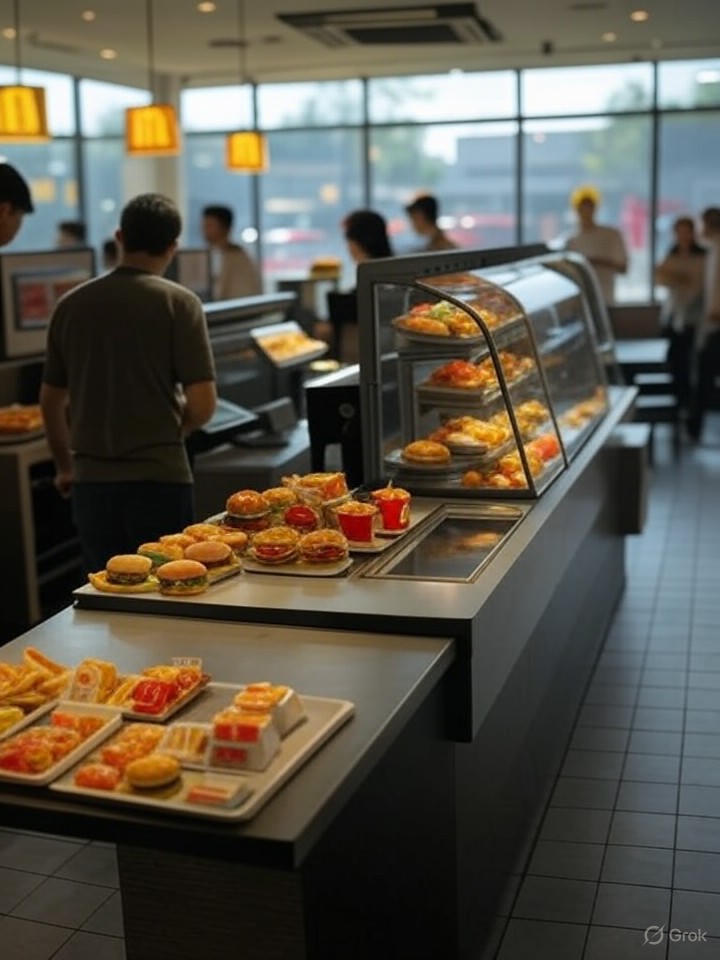Fast-food chains are strategically positioning their menus around the $10 price point to navigate the challenges of inflation in 2025. This threshold has become a crucial factor in consumer perceptions of value, prompting major brands like McDonald’s and Wendy’s to carefully adjust their pricing strategies. Reports indicate that these companies are aiming to keep prices just under this psychological barrier, recognizing that crossing into double digits could deter budget-conscious customers.
The $10 ceiling acts as a mental anchor for consumers, particularly during a period marked by ongoing inflation and economic uncertainty. With rising costs for ingredients, labor, and operations, fast-food executives are balancing the need for profitability against customer loyalty. According to an analysis by MarketWatch, items priced above $10 are often perceived as overpriced, leading chains to innovate with bundled meals and limited-time offers to maintain customer interest.
The Psychology of Pricing
This pricing strategy is rooted in behavioral economics, where small adjustments, such as ending prices in .99, can significantly influence consumer behavior. A meal priced at $9.99 feels more appealing than one at $10.01, despite the minimal difference. Users on social media platforms, including X (formerly Twitter), have highlighted how fast-food chains are “pressuring their margins” to avoid surpassing this barrier, as noted in real-time updates from August 23, 2025.
Historical data supports the effectiveness of this approach. A study featured in WDBJ7 news reveals that prices at major fast-food chains have increased by up to 100% over the past decade, outpacing national inflation rates. In response, chains are now focusing on value resets. McDonald’s, for instance, reintroduced its $5 meal deal in mid-2024 to address declining sales, a move that has continued into 2025 amid positive consumer feedback.
Navigating Inflation’s Challenges
The impact of inflation has compelled fast-food chains to adopt creative solutions. A case study in the Harvard Business Review examines a fictional chain, Burger & Bites, which faced volatile costs and considered dynamic pricing through digital menus. In the real world, Wendy’s encountered backlash in 2024 over rumors of surge pricing, as noted by the advocacy group More Perfect Union. Although adjustments were made to mitigate customer discontent, the threat of eroding consumer trust remains a concern.
Experts from Revenue Management Solutions suggest that while dynamic pricing can enhance profits by adjusting to factors like demand and inventory levels, it risks alienating customers if not implemented transparently. Consequently, chains are integrating loyalty programs and personalized discounts to ensure that core offerings rarely exceed $10.
Menu engineering is playing a crucial role in these strategies. Insights from Toast’s blog indicate that while fast-food prices are projected to continue rising in 2025, chains are emphasizing “value layers.” This involves offering tiered options where premium add-ons can increase totals without crossing the $10 threshold. Burger King and Taco Bell have both adopted this model, introducing $6 bundles that include entrees, sides, and drinks, as reported in Business Insider.
Consumer sentiment, reflected in discussions on X, shows frustration with the rising costs of meals, which now frequently fall within the $15 to $17 range. Many customers are willing to accept price increases but are sensitive to perceptions of greed, prompting chains to focus on fairness in pricing.
As 2025 progresses, industry reports, including the QSR Magazine’s 2025 QSR 50, highlight resilience through innovation. This includes the potential use of AI-driven pricing and wellness-focused menus. Nonetheless, the $10 barrier remains critical; exceeding it could alienate price-sensitive diners, particularly in light of ongoing economic challenges.
Ultimately, the ability to master pricing strategies that stay below this threshold while innovating will likely define the success of fast-food chains in the coming year. As FeastQuest suggests, 2025 will be a testing ground for these strategies, where consumer value is increasingly about more than just cost—it’s also about perceived fairness and equity in every meal.
